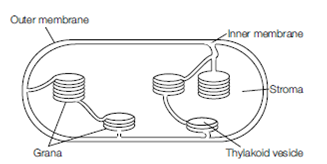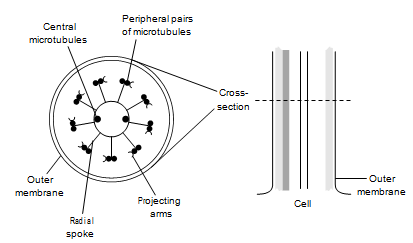Flagella
Flagella are membrane-bound extensions of the cell, which contain microtubules. The microtubules are arranged as a bundle of nine doublets around the periphery of the flagellum, with a pair of single microtubules running within them. This structure is called the axoneme. Flagella provide cells with motility, because they flex and bend when supplied with ATP. Each outer pair of microtubules has arms projecting towards a neigh- boring doublet and a spoke extending to the inner pair of microtubules. Micro- tubules are formed from tubulin, a self-assembling protein. Tubulin is composed of two subunits, a and b, arranged in a helical fashion. The projecting arms between outer sub- units are made up of the protein dynein. This protein is involved in converting the energy released from ATP hydrolysis into mechanical energy for flagellar movement. Movement is produced by the interaction of the dynein arms with one of the microtubules of adjacent doublets. A basal body (kinetosome) anchors the flagellum within the cytoplasm.

Figure: Structure of a chloroplast

Figure: General structure of a flagellum or cilium